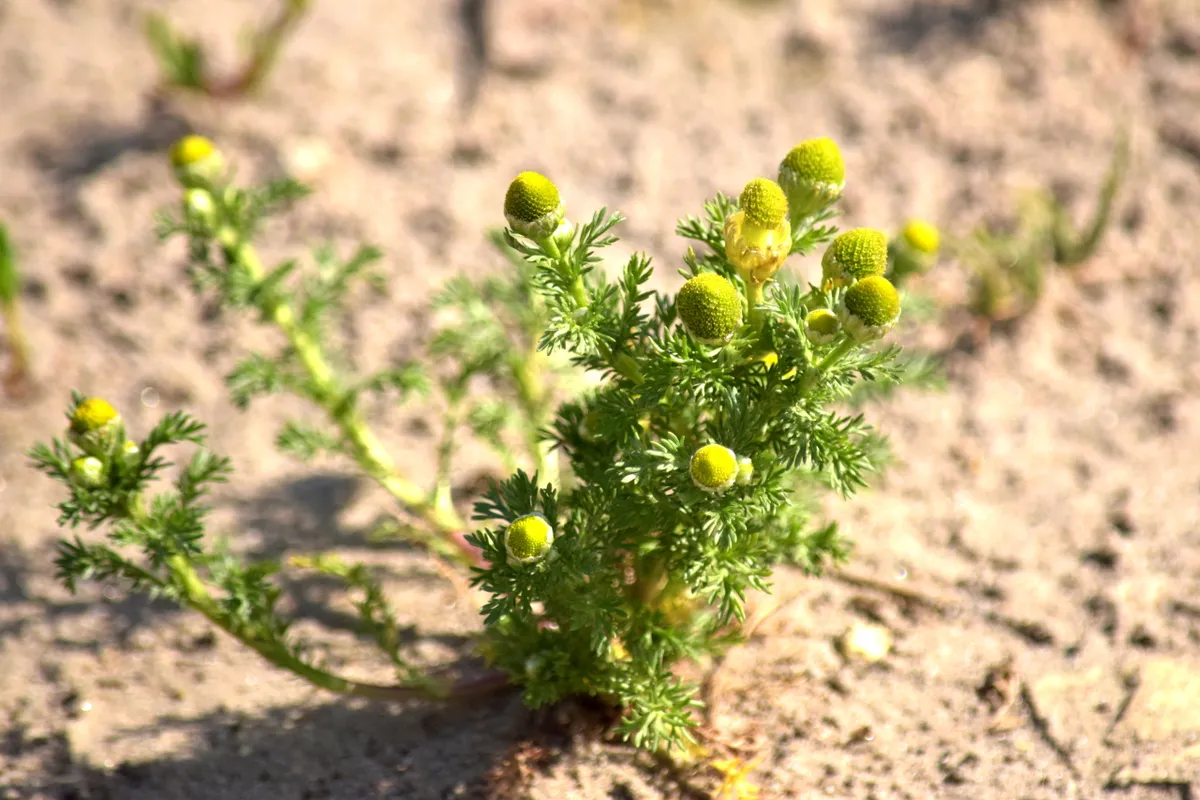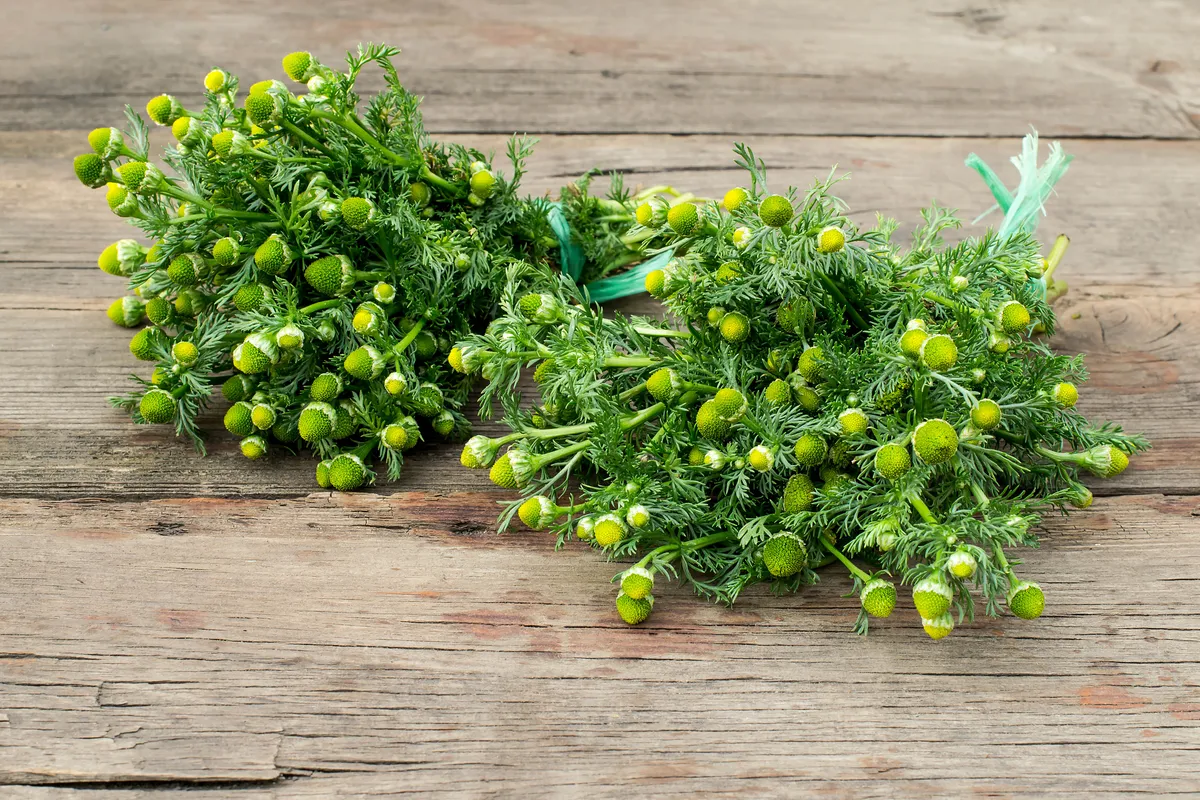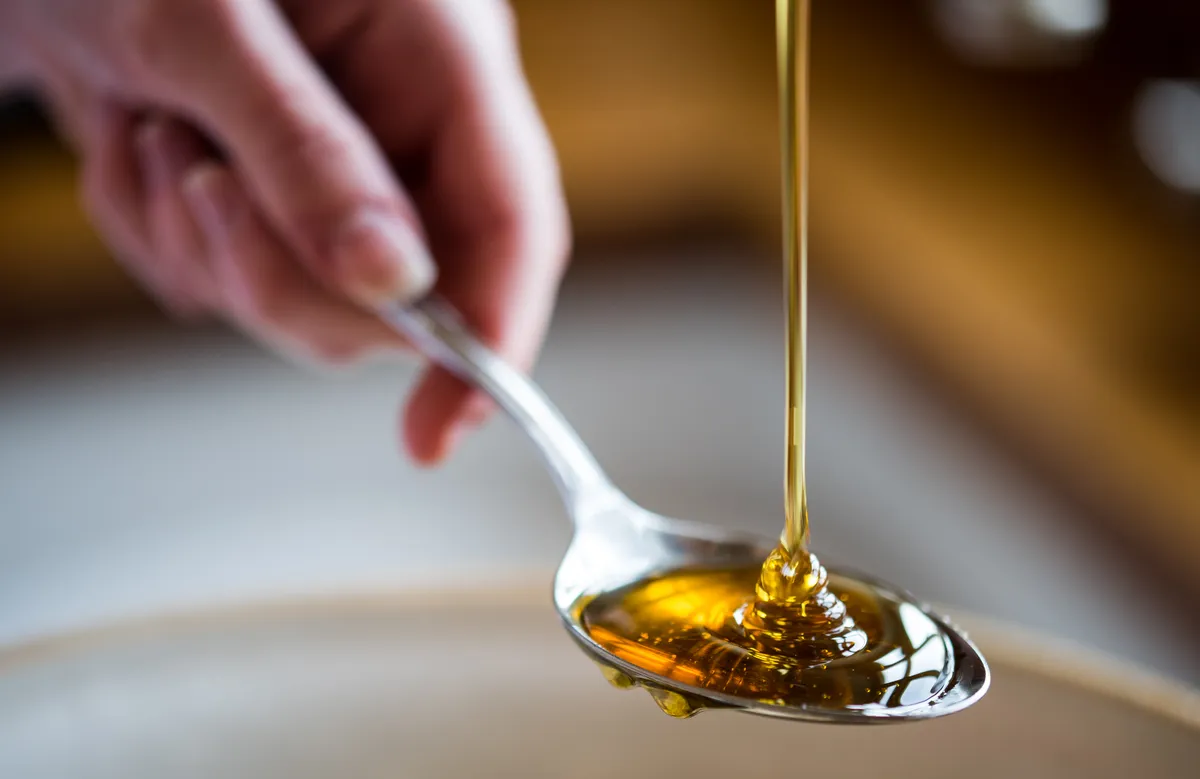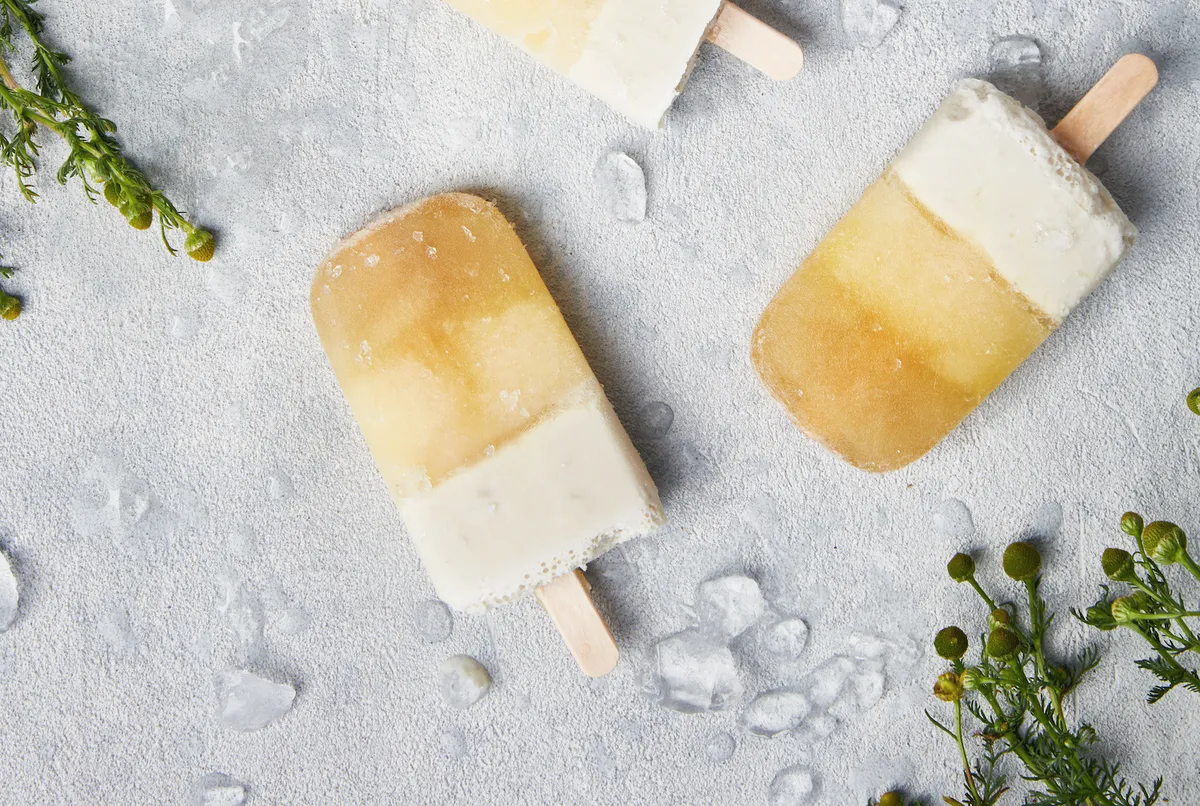Pineapple weed is a persistent plant that thrives in well-trodden areas in the city and countryside, hence its nickname: street weed.
Rubbing the flowers releases their smell, which is reminiscent of pineapple, mango or even passionfruit – a joyous discovery for adults and little ones alike.
Find out more about this hardy plant – including how to identify it, how to make pineapple weed tea and other recipe ideas – with our forager's guide.
Looking for more things to forage? Check out our guides to foraging in May, June and July.
Monthly foraging guide
Our beginner's guide to foraging in Britain explains what you can gather in hedgerows, woodlands, along the coast and in the countryside.
Pineapple weed guide
How to identify pineapple weed
Native to North America, pineapple weed (Matricaria discoidea (Asteraceae)) has been well-established in Europe since the 19th century and has spread across much of Asia and Australia.
Pineapple weed is distinguished by its petal-less, pineapple-shaped flowerheads, which are also thought to have inspired its name.
It grows to 12cm/5in tall with feathery leaves and greeny-yellow, domed flowerheads with no petals.

Pineapple weed benefits
Also known as ‘wild chamomile’ or ‘false chamomile’, pineapple weed shares the medicinal and herbal qualities of chamomile (Chamaemelum nobile andMatricaria chamomilla), with the addition of a fruity flavour. It has analgesic properties and can numb pain; it’s often used to treat insomnia, or rubbed on insect bites and used to soothe irritated skin (though beware, some people are allergic to it).
When to forage pineapple weed?
Early summer to early autumn when in flower.
Nettle magic
Our nettle guide explores how to forage for nettles in Britain, including where they can be found, characteristics and recipe ideas, plus how to pick and cook nettles without getting stung.
Where to forage pineapple weed
Pineapple weed thrives where people, vehicles and animals tread: it’s most often found in the dry, compacted soil of pathways, pavement cracks, field edges and driveways.
How to forage pineapple weed
Use scissors to snip off the flowerheads as the stems are hardy.

How to dry pineapple weed
Place in a sunny room or warm outdoor spot for 1–2 days until dry, or use a dehydrator. To replace fresh pineapple weed with dried in recipes, use about a quarter of the weight given and make up the rest of the weight with water.
Cautions
Can cause an allergic reaction in some people; symptoms may be similar to hay fever or include skin or eye irritation. May cause stomach upsets if consumed in large amounts.
Pineapple weed recipes
Pineapple is often infused to make a caffeine-free tea – simply add the flowerheads to hot water, cover for 15 minutes, then drink. You can also use pineapple weed to make sweet treats, such as pineapple weed syrup and pineapple weed ice lollies:
Pineapple weed syrup
This is the best pineapple weed syrup you’ll ever try: aromatic and citrussy. The secret is to discard the green bits and just use the flowerheads. It’s delicious drizzled over yoghurt, diluted for drinks or used in pineapple weed and coconut ice lollies.

Pineapple weed and coconut ice lollies
These lollies give a cooling hit of sweet, grassy pineapple weed – that's the pineapple weed syrup – followed by a layer of puréed pineapple, sitting on a sweet coconut base. You’ll need a lolly mould to make them; some have built-in sticks, but otherwise you can use traditional wooden ones.

